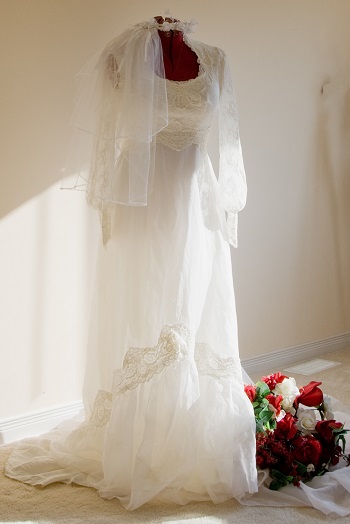This AR technology experience provides women with a virtual image of the way they’d look in various dresses.
A new augmented reality app is giving brides to be the opportunity to discover the perfect wedding dress styles for their body type and personal taste, and all this without ever having to step into a brick and mortar store.
This tool has been created to help to reduce the strain on wedding planning that can be felt by many brides.
While choosing a gown is meant to be a happy experience, many brides find that they feel overwhelmed by all of the planning involved in a wedding and all of the various dress options can become the straw that breaks the camel’s back. Even among those who are keeping up with the planning, dress shopping can be highly time consuming and difficult to work into a very busy schedule. This new augmented reality app is meant to help to make this process much easier and cut out a lot of the time and stress that can be associated with it.
The augmented reality app can provide brides with the chance to see what styles, silhouettes and fabrics look best on them.
 According to the Wedding Dress Studio app executive director, Hillary Sica, “With thousands of wedding dress designs available today, dress shopping can be very overwhelming for a bride-to-be.” She added that “We designed Wedding Dress Studio to alleviate some of that burden and help women visualize what silhouettes, styles, and even dress fabrics will potentially look the best on them.”
According to the Wedding Dress Studio app executive director, Hillary Sica, “With thousands of wedding dress designs available today, dress shopping can be very overwhelming for a bride-to-be.” She added that “We designed Wedding Dress Studio to alleviate some of that burden and help women visualize what silhouettes, styles, and even dress fabrics will potentially look the best on them.”
The company that designed the app used AR technology to help brides to be to be able to better visualize the way that a certain type of gown will look on their own unique bodies. That way, when they do head to a bridal salon, they will be equipped with a far clearer idea of what she does and does not want from her gown, narrowing down the number of choices, right from the start.
The dresses displayed in augmented reality are not actual dress designs but are instead simulated style, silhouette and fabric types that are similar to their counterparts in reality.
The popular music streaming service has officially rolled out its first application for this wearable technology.
Explorers now have a brand new way to be able to listen to music over their Google Glass wearable tech, as Pandora has now rolled out its very first app that is designed specifically for use over these devices.
The Glass app gives users the ability to be able to control their stations through the use of voice command.
The Google Glass app first came to life as an internal hackathon project earlier in 2014 that was held by Pandora. The company found that the effort was so popular that it went ahead and turned it into an official application designed for the augmented reality headset. It provides users with the ability to be able to listen to music through the AR glasses in three separate ways. The first is with the ear bud that is provided in the Glass Explorer kit. The second is with the additional optional stereo ear bud gadget. And the third is with the guilt in speaker of the wearable tech, itself, which doesn’t require any additional accessories.
The Google Glass version of the app can be controlled either through the touchpad or voice command.
Pandora made a blog post to share the control methods, in which it said that “Our Glassware allows you to access your personalized radio stations from wherever you are, interacting with the service through voice command or by using the touchpad.”
Users can also either play existing stations or create new ones through the use of the new app. Among the voice commands that are available to them are those that allow them to choose or form new stations. However, the touchpad goes above and beyond that for allowing users to play, skip, or pause tracks, as well as to rate individual tracks using the thumbs up or thumbs down signs.
In order to download the app, owners of the device simply need to visit the Google Glass page, turn on Pandora, and then sign in. This is the second app that has been designed by Pandora for wearable devices. The first one was made specifically for the Pebble smartwatch, and it was rolled out earlier in 2014. That said, the company has been dropping hints to suggest that there may be more focus on wearables in the future.
 According to the Wedding Dress Studio app executive director, Hillary Sica, “With thousands of wedding dress designs available today, dress shopping can be very overwhelming for a bride-to-be.” She added that “We designed Wedding Dress Studio to alleviate some of that burden and help women visualize what silhouettes, styles, and even dress fabrics will potentially look the best on them.”
According to the Wedding Dress Studio app executive director, Hillary Sica, “With thousands of wedding dress designs available today, dress shopping can be very overwhelming for a bride-to-be.” She added that “We designed Wedding Dress Studio to alleviate some of that burden and help women visualize what silhouettes, styles, and even dress fabrics will potentially look the best on them.”
